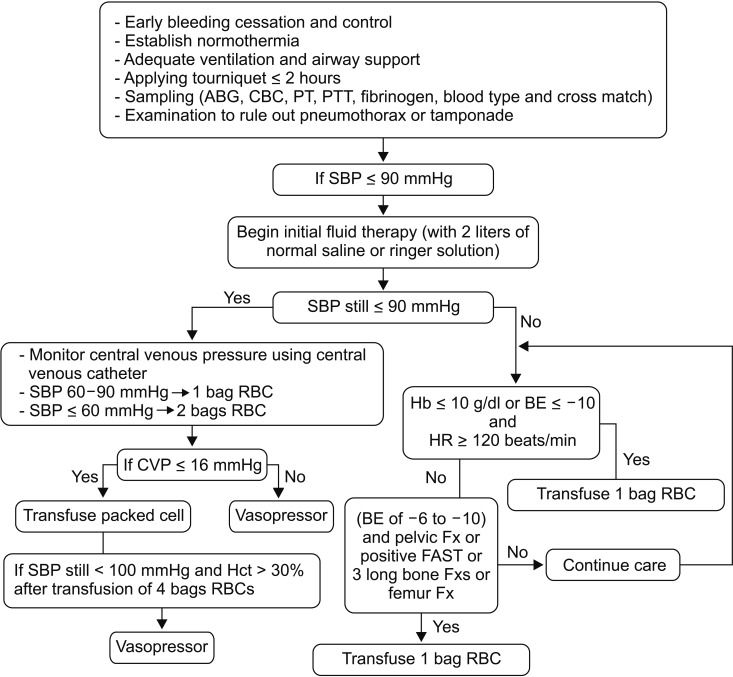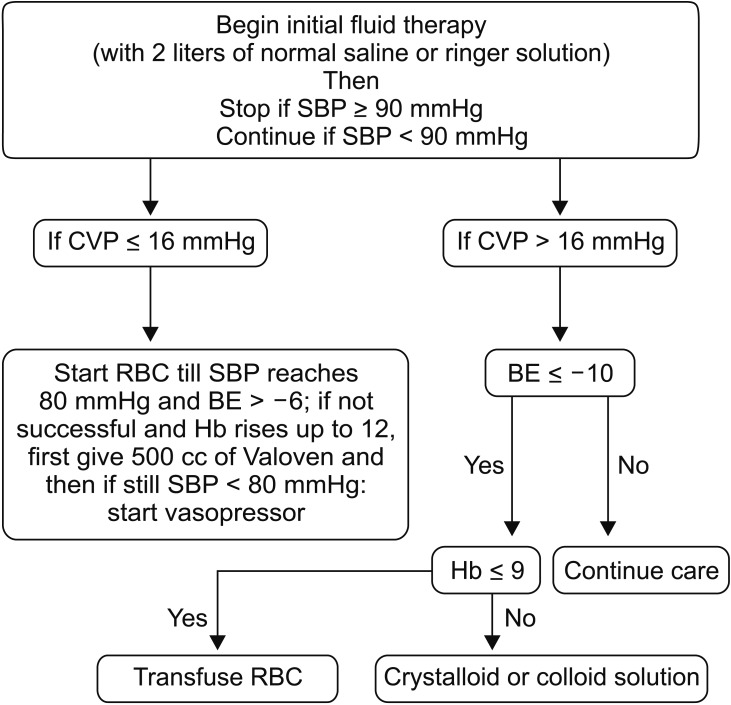1. Paydar S, Ahmadi A, Dalfardi B, Shakibafard A, Abbasi H, Bolandparvaz S. Clinical and economic effects of selective radiological evaluation of high-energy trauma patients: a prospective experience of a level 1 busy trauma centre. Emerg Med J 2015; 32: 535-538. PMID:
25178976.


2. Kauvar DS, Lefering R, Wade CE. Impact of hemorrhage on trauma outcome: an overview of epidemiology, clinical presentations, and therapeutic considerations. J Trauma 2006; 60(6 Suppl): S3-11. PMID:
16763478.


3. Khoshmohabat H, Dalfardi B, Dehghanian A, Rasouli HR, Mortazavi SM, Paydar S. The effect of CoolClot hemostatic agent on skin wound healing in rats. J Surg Res 2016; 200: 732-737. PMID:
26363805.


4. Holcomb JB, Jenkins D, Rhee P, Johannigman J, Mahoney P, Mehta S, et al. Damage control resuscitation: directly addressing the early coagulopathy of trauma. J Trauma 2007; 62: 307-310. PMID:
17297317.


5. Brohi K, Cohen MJ, Ganter MT, Schultz MJ, Levi M, Mackersie RC, et al. Acute coagulopathy of trauma: hypoperfusion induces systemic anticoagulation and hyperfibrinolysis. J Trauma 2008; 64: 1211-1217. PMID:
18469643.


6. Tapia NM, Chang A, Norman M, Welsh F, Scott B, Wall MJ Jr, et al. TEG-guided resuscitation is superior to standardized MTP resuscitation in massively transfused penetrating trauma patients. J Trauma Acute Care Surg 2013; 74: 378-385. PMID:
23354228.


7. Tien H, Nascimento B Jr, Callum J, Rizoli S. An approach to transfusion and hemorrhage in trauma: current perspectives on restrictive transfusion strategies. Can J Surg 2007; 50: 202-209. PMID:
17568492.


8. Borgman MA, Spinella PC, Perkins JG, Grathwohl KW, Repine T, Beekley AC, et al. The ratio of blood products transfused affects mortality in patients receiving massive transfusions at a combat support hospital. J Trauma 2007; 63: 805-813. PMID:
18090009.


9. Spinella PC, Holcomb JB. Resuscitation and transfusion principles for traumatic hemorrhagic shock. Blood Rev 2009; 23: 231-240. PMID:
19695750.



10. Young PP, Cotton BA, Goodnough LT. Massive transfusion protocols for patients with substantial hemorrhage. Transfus Med Rev 2011; 25: 293-303. PMID:
21664104.



11. Schuster KM, Davis KA, Lui FY, Maerz LL, Kaplan LJ. The status of massive transfusion protocols in United States trauma centers: massive transfusion or massive confusion. Transfusion 2010; 50: 1545-1551. PMID:
20158684.


12. Patil V, Shetmahajan M. Massive transfusion and massive transfusion protocol. Indian J Anaesth 2014; 58: 590-595. PMID:
25535421.



13. Kashuk JL, Moore EE, Johnson JL, Haenel J, Wilson M, Moore JB, et al. Postinjury life threatening coagulopathy: is 1:1 fresh frozen plasma:packed red blood cells the answer. J Trauma 2008; 65: 261-270. PMID:
18695460.


14. Scalea TM, Bochicchio KM, Lumpkins K, Hess JR, Dutton R, Pyle A, et al. Early aggressive use of fresh frozen plasma does not improve outcome in critically injured trauma patients. Ann Surg 2008; 248: 578-584. PMID:
18936570.


15. Spinella PC, Perkins JG, Grathwohl KW, Beekley AC, Niles SE, McLaughlin DF, et al. Effect of plasma and red blood cell transfusions on survival in patients with combat related traumatic injuries. J Trauma 2008; 64(2 Suppl): S69-S77. PMID:
18376175.


16. Gunter OL Jr, Au BK, Isbell JM, Mowery NT, Young PP, Cotton BA. Optimizing outcomes in damage control resuscitation: identifying blood product ratios associated with improved survival. J Trauma 2008; 65: 527-534. PMID:
18784564.


17. Cotton BA, Au BK, Nunez TC, Gunter OL, Robertson AM, Young PP. Predefined massive transfusion protocols are associated with a reduction in organ failure and postinjury complications. J Trauma 2009; 66: 41-48. PMID:
19131804.


18. Schöchl H, Nienaber U, Hofer G, Voelckel W, Jambor C, Scharbert G, et al. Goal-directed coagulation management of major trauma patients using thromboelastometry (ROTEM)-guided administration of fibrinogen concentrate and prothrombin complex concentrate. Crit Care 2010; 14: R55PMID:
20374650.



19. Pham HP, Shaz BH. Update on massive transfusion. Br J Anaesth 2013; 111(Suppl 1): i71-i82. PMID:
24335401.



20. Chaiwat O, Lang JD, Vavilala MS, Wang J, MacKenzie EJ, Jurkovich GJ, et al. Early packed red blood cell transfusion and acute respiratory distress syndrome after trauma. Anesthesiology 2009; 110: 351-360. PMID:
19164959.


21. Acker SN, Partrick DA, Ross JT, Nadlonek NA, Bronsert M, Bensard DD. Blood component transfusion increases the risk of death in children with traumatic brain injury. J Trauma Acute Care Surg 2014; 76: 1082-1087. PMID:
24662875.


22. Hill GE, Frawley WH, Griffith KE, Forestner JE, Minei JP. Allogeneic blood transfusion increases the risk of postoperative bacterial infection: a meta-analysis. J Trauma 2003; 54: 908-914. PMID:
12777903.


23. Chapman CE, Stainsby D, Jones H, Love E, Massey E, Win N, et al. Ten years of hemovigilance reports of transfusion-related acute lung injury in the United Kingdom and the impact of preferential use of male donor plasma. Transfusion 2009; 49: 440-452. PMID:
18980623.


24. Benson AB, Moss M, Silliman CC. Transfusion-related acute lung injury (TRALI): a clinical review with emphasis on the critically ill. Br J Haematol 2009; 147: 431-443. PMID:
19663827.



25. Whitaker BI, Hinkins S. The 2011 National Blood Collection and Utilization Survey Report. Washington, The U.S. Department of Health and Human Services. 2011.















